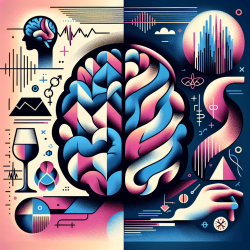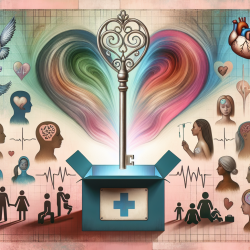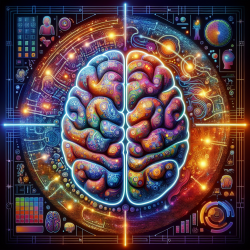Understanding Hierarchical Brain Networks: A New Frontier in Cognitive Therapy
As practitioners in the field of speech-language pathology, we are constantly seeking ways to enhance our therapeutic approaches to achieve the best outcomes for our clients, particularly children. A recent study titled The global landscape of cognition: hierarchical aggregation as an organizational principle of human cortical networks and functions provides groundbreaking insights that can be leveraged to improve cognitive therapy.
The Research: Hierarchical Aggregation in Brain Networks
The study explores how human brain functions are organized in a hierarchical manner, starting from sensory inputs and progressing to more abstract functions deeper in the brain. This concept, termed "network-depth," ranks cognitive functions based on their level of abstraction and connectivity to sensory inputs.
Using extensive fMRI data, the researchers demonstrated that regions closer to sensory inputs are involved in processing concrete tasks, while regions deeper in the brain handle more abstract cognitive functions. This hierarchical organization mirrors the structure seen in artificial neural networks, suggesting a fundamental principle of brain function.
Implications for Cognitive Therapy
Understanding this hierarchical structure can significantly impact how we approach cognitive therapy. Here are some ways to apply these insights:
- Targeted Interventions: By identifying which brain regions are activated during specific tasks, therapists can design interventions that target these areas, enhancing therapy effectiveness.
- Personalized Therapy Plans: Recognizing that different cognitive functions are processed at varying depths allows for more personalized therapy plans that cater to the unique needs of each child.
- Enhanced Outcome Measurement: With a clearer understanding of brain function organization, practitioners can develop more precise metrics to measure therapy outcomes, ensuring continuous improvement.
Encouraging Further Research
While this study provides a robust framework for understanding cognitive function organization, it also opens the door for further research. Practitioners are encouraged to explore how these findings can be integrated into practice and to contribute to the growing body of knowledge in this area.
In conclusion, the hierarchical organization of brain networks presents a promising avenue for enhancing cognitive therapy. By applying these insights, practitioners can develop more effective interventions, ultimately leading to better outcomes for children.
To read the original research paper, please follow this link: The global landscape of cognition: hierarchical aggregation as an organizational principle of human cortical networks and functions.










